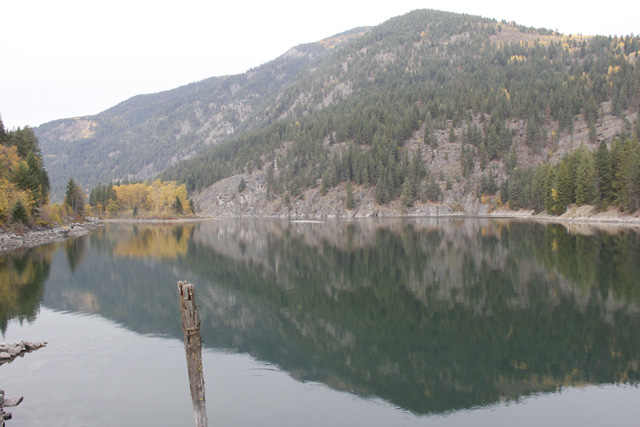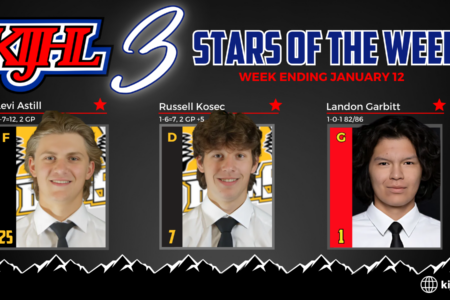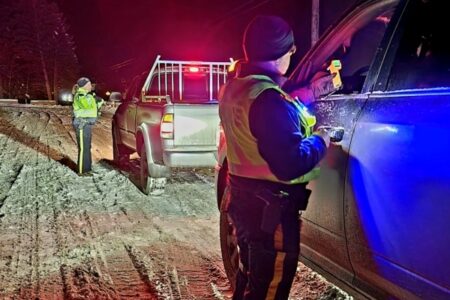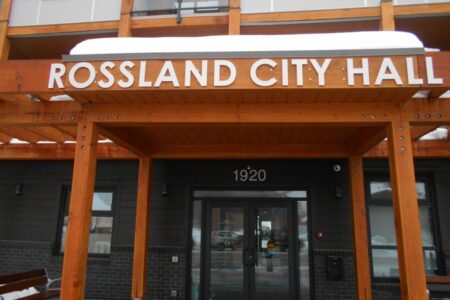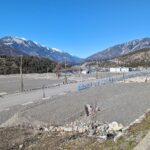Public meeting set to determine fate of multi-million dollar Grohman Narrows project
The fate of a multi-million dollar project to improve one of the region’s main waterways hangs in the hands of the people it serves.
BC Hydro will be hosting an open house to review the findings from a number of studies related to the potential improvements at Grohman Narrows and is asking for feedback from the public.
The meeting will take place on Thursday, October 29 from 6-8 p.m. at the Prestige Lakeside Resort in Nelson.
All areas of the project have been studied, said Mary Anne Coules, BC Hydro representative, including regulations, environmental impacts, social ramifications, property and potential costs.
“So far our studies have not indicated any significant obstacles to proceeding with a Grohman Narrows channel improvement project, subject to additional studies and stakeholder consultation,” she said.
Grohman Narrows is a natural constriction on the Kootenay River, located approximately three kilometres downstream of Nelson. During periods of high inflow into Kootenay Lake, this constriction can contribute to unavoidably high lake levels and flooding.
That flooding became problematic in 2012 when the lake rose to a level not seen in 38 years. As a result of that high‐water event and the consequent flood damage to properties around Kootenay Lake and downstream, regional leaders encouraged BC Hydro to fully investigate improvements to Grohman Narrows.
In early 2013, BC Hydro initiated an engineering study to investigate the feasibility, costs, and benefits of such channel improvements.
Improvements at Grohman Narrows would provide greater flood control, improve the operating flexibility for the Kootenay Lake system and provide power benefits to downstream generating stations in Canada (and potentially in the U.S.)
If the project moves ahead it would not be the first time Grohman Narrows has been dredged. According to information from BC Hydro, in 1890 Kootenay Company, Ltd removed 18,000 cubic yards of blasted rock, boulder and gravel from the riverbed.
Almost 50 years later in 1939 West Kootenay Power and Light removed over 330,000 cubic yards of gravel and nearly 18,000 yards of rock from the Narrows, including material blasted from the bluffs on the south side of the river.
Geotechnical studies released at a public meeting in Nelson last year revealed bedrock still lying thick across most of the Grohman Narrows area — and bed materials which consist of a mix of sand, gravel and cobbles — but would not influence dredging operations. The only significant sediment comes from Grohman Creek.
Although a substantial body of information has been assembled, the decision on whether or not to move ahead with the next phase of the project has not been made at this time, said Coules.
“The feedback we receive from local government, First Nations, stakeholders and the community will be considered as part of the decision-making process to determine whether or not to proceed,” she said.
If the project moves ahead — with the channel deepened, not widened — the next phase would take up to two years and would be subject to regular re-evaluation of the project impacts, costs and benefits.
If the project does not move ahead, Grohman Narrows will continue to restrict the amount of water that can be discharged downstream, contributing to unavoidably high lake levels and flooding.
The economic benefits and costs for the Grohman Narrows project are very uncertain at this stage of the project, Coules admitted. The low excavation scenario is expected to be economic; the medium scenario is expected to be marginally economic.
The high scenario — which would bring the biggest energy benefit and lower the lake approximately two feet — is not economic and would likely be excluded from further study, Coules noted.
There are a number of major factors affecting the project cost, including excavation methodology, timing and material management options.
However, Coules said preliminary cost estimates range from $21 million to $68 million for the low to high volume scenarios. BC Hydro will pay for the project, said Coules.
“It would take approximately 40 years for the energy benefits to offset the construction and overhead costs required for the project,” she said.
BC Hydro also identified areas of environmental concern and features of significance.
Further work needed:
- If a decision is made to proceed to the next phase of the project, further studies will likely include:
- Engineering: confirm characteristics of sub‐surface river bed materials, additional hydraulic modelling to refine excavation levels, additional operations modelling, erosion studies, modelling to address river bed changes post‐dredging and review of dredging methodologies and material management options.
- Environmental: kokanee spawning surveys, Kootenai white sturgeon, analysis of the effects of flow and water level changes, material management options, and environmental management and mitigation plans.
— Source: BC Hydro Grohman Narrows Update
Under investigation:
- BC Hydro’s project team finalized a number of studies related to the potential improvements at Grohman Narrows. There were two main fields of investigation:
- What are the impacts of voluntarily limiting the seasonal minimum Kootenay Lake levels between 1,738 and 1,739 feet;
- What are the downstream impacts of the potential Grohman Narrows excavation on the flows in the Kootenay and Columbia Rivers?
- The results of this modelling show a voluntary constraint on the minimum Kootenay Lake level results in reduced net economic benefits for the project, but has a negligible impact on the annual peak Kootenay Lake level.
- As well, there would be a very small impact on the peak Kootenay River and Columbia River discharges. The low and medium excavation scenarios have a negligible impact on peak Columbia River flows at Castlegar, Genelle and Trail.
- Under the high excavation scenario, peak Columbia River flows would be reduced by approximately five per cent.
— Source: BC Hydro Grohman Narrows Update
Fisheries concerns: kokanee
- Studies of Kootenay Lake kokanee shoreline spawners have estimated spawning to occur during September, with hatch and emergence in February and March.
- A local consultant has been engaged to refine these estimates.
- Depending on the elevation of redds and emergence timing, kokanee redds are at risk of being dewatered by lower springtime lake levels. Current operating practice is to operate the lake at a lower level during the spawning period to reduce the likelihood and number of kokanee fry mortalities during the hatching and emergence period.
- The Grohman Narrows excavation would allow lake levels to be further reduced during the spring. This reduction and its potential impacts on Kootenay Lake kokanee shoreline spawners will be considered as the project planning progresses. While this reduction could be voluntary limited to further reduce fry losses, such a restriction would reduce the project’s economic viability.
— Source: BC Hydro Grohman Narrows Update
Fisheries concerns: white sturgeon
- White sturgeon spawn in the Kootenai River near Bonners Ferry, Idaho. These fish are on the endangered list in both Canada and the U.S.
- High Kootenay Lake levels result in backwater on the Kootenai River as far upstream as Bonners Ferry, typically around the time that sturgeon are interested in spawning.
- A reduction of 1.1 feet in the peak Kootenay Lake level under the medium excavation scenario would translate to a reduction of approximately six inches feet in the peak river level at Bonners Ferry.
- While it appears unlikely that lower peak levels would impact sturgeon spawning and recruitment further investigations will be required if the project moves ahead.
- BC Hydro will consult with U.S. and Canadian fisheries authorities and First Nations groups to determine if there is a conflict between flood risk management and sturgeon spawning needs.
— Source: BC Hydro Grohman Narrows Update
Request for feedback
If you are unable to attend the open house on Oct. 29, people can contact Coules directly with any questions, concerns or feedback by Wednesday, Nov. 4. She can be reached at 250-365-4565 or by email at maryanne.coules@bchydro.com.
Story originated at The Nelson Daily.


